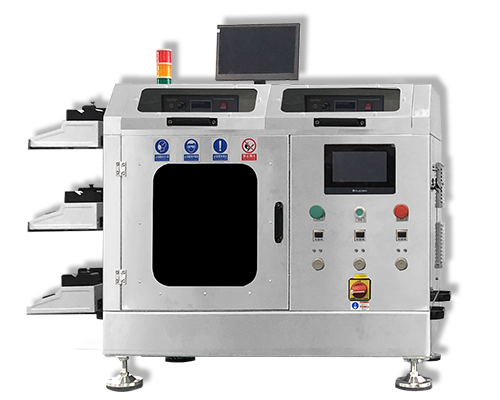Cardiac stent laser process
Cardiac stent laser process – Medical Device Coating – Cheersonic
Cardiac stents first appeared in the 1980s, also known as coronary stents. The diameter of the cardiac stent is only 2-4 mm and the weight is less than one ten thousandth of a gram. It is a more direct and effective tool to deal with acute myocardial infarction. It can reach the blocked coronary artery along the blood vessel, and quickly open the blocked blood vessel, thereby restoring and maintaining the normal blood flow for a long time.
Since the cardiac stent is directly implanted into the human body, in-depth research must be carried out on the use characteristics and safety, and extremely harsh conditions must be met. Such as flexibility, anti-thrombotic, biocompatibility, support and other requirements. The wall tube of the heart stent is extremely thin and needs to be fabricated using a precision laser cutting process. The use of ordinary laser processing will lead to problems such as many burrs and uneven notch width of the cardiac stent, and the cardiac stent produced in this way cannot meet the conditions of use.
In recent years, femtosecond lasers have been used for stent cutting. Femtosecond lasers refer to lasers whose time-domain pulse widths are on the order of femtoseconds (femtoseconds, 10^-15 seconds). The strong electric field generated by the short pulse of the femtosecond laser is used to eliminate the free electrons near the tangent point of the material, so that the positively charged materials repel each other and lose the intermolecular force. The material is removed by “molecular removal”. The cross-section of the heart stent processed in this way has no burrs, a smooth surface, no heat loss and no ablation, high cutting precision and uniform rib width.
Metal cardiovascular stent implantation is currently the most widely used method for the treatment of vascular diseases. Because metal stents remain permanently in the artery after implantation, there is a risk of medical complications. To reduce this risk, the concept of absorbable stents has also become a research hotspot today. The stent can be made of poly-L-lactic acid (PLLA), polylactic acid (PLA) and other materials, but this material has a low melting point and is sensitive to thermal effects, which greatly increases the difficulty of processing.
Absorbable stents are fabricated by ultrafast laser, so that the thermal effect of laser beam energy on stent materials is minimized. However, at present, the absorbable vascular stents manufactured by ultrafast laser micro-nano are expensive and low-yield. How to use this technology to realize the industrialization of vascular stents is an urgent problem for researchers to solve.
Laser processing of cardiac stents is mainly used in Europe, the United States and Japan.
Cardiac stents can be divided into second-generation metal stents and third-generation biodegradable stents according to their materials. Due to the small size, thin structure, and high requirements of appearance and mechanical properties, laser processing is the best processing method.
Ordinary fiber lasers can complete the processing of most metal stents, while bioabsorbable stents are made of degradable polymer materials, which are easy to thermally degrade during melt processing, low light absorption rate, and easy to carbonize during processing. “Hot” processing is difficult to do. The femtosecond laser with ultra-high peak power and ultra-short pulse has significant advantages. By adjusting the process parameters, the “cold” processing effect of smooth trimming and no carbonization of degradable materials can be achieved, which perfectly solves the above problems.
The femtosecond laser cutting equipment for medical stents currently on the market provides the best solution for processing the third generation of degradable stents. The use of a specific fixture structure can solve the processing problem caused by the insufficient mechanical strength of the degradable stent pipe, and ensure the relative position, the stability of the focal spot size and the consistency of the stent rib width during processing. The equipment is used in the precision cutting of stent products in the medical device industry, mainly cutting degradable materials such as polylactic acid (PLA) and poly-L-lactic acid (PLLA), and is compatible with 316 stainless steel, nickel-titanium alloy, cobalt-chromium alloy, magnesium-aluminum alloy and other metals Precision cutting of materials.
Source: LaserfairCom
The ultrasonic drug-eluting stent spray coating system can be applied to the preparation of polymer coating for preventing vascular restenosis on the surface of implantable drug-eluting stent. Compared to conventional two-fluid nozzles, ultrasonic nozzles can spray a more uniform drug coating that completely covers the stent without the orange peel and adhesion to a complex stent. The soft atomized spray adheres well to surfaces and coating morphology characteristics can be adjusted by modifying process parameters. In addition, the stent coating obtained by ultrasonic spray coating technology is thinner than dip-coating. Ultrasonic spray coating technology can precisely control the amount of drug sprayed on the stent, making the control of the spraying more precisely.
Cheersonic is the leading developer and manufacturer of ultrasonic coating systems for applying precise, thin film coatings to protect, strengthen or smooth surfaces on parts and components for the microelectronics/electronics, alternative energy, medical and industrial markets, including specialized glass applications in construction and automotive.


